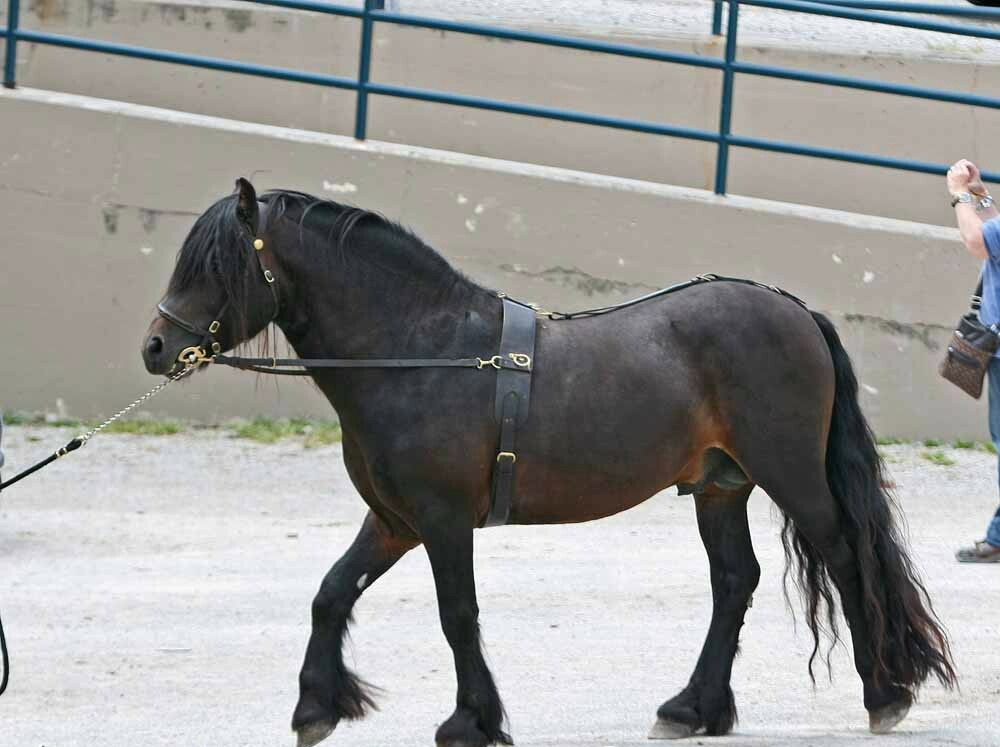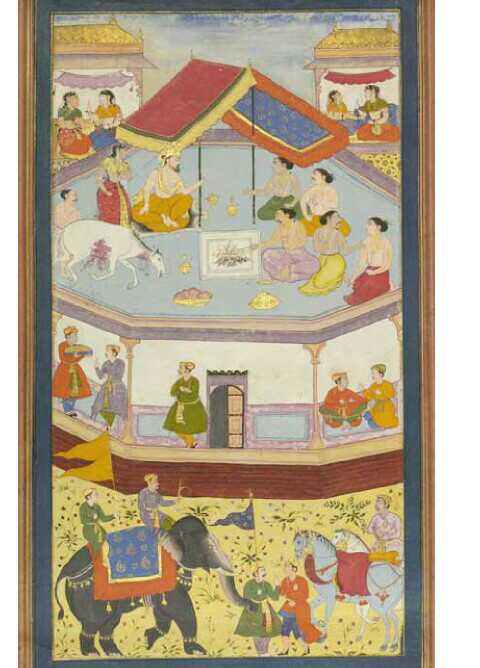|
Völsa þáttr
''Vǫlsa þáttr'' is a short story which is only extant in the ''Flateyjarbók'' codex, where it is found in a chapter of ''Óláfs saga helga''. It is probably from the 14th century but takes place in 1029, when Scandinavia was still largely pagan, and it appears to preserve traditions of a pagan phallus cult, the ''vǫlsi''. Worship The story goes that an old man and an old woman lived with their brisk son, intelligent daughter and several thralls on a promontory far from other people. After one thrall butchered a horse and was about to throw away the horse's penis, the boy ran past, took it, and went to the place where his mother, sister, and the slave woman were sitting. There he joked at the slave woman, telling her the organ would not be dull between her legs, whereupon the slave woman laughed. The daughter asked her brother to throw away the disgusting object, but her old mother rose and said it was a useful thing that should not be thrown away. She wrapped it in a cloth ... [...More Info...] [...Related Items...] OR: [Wikipedia] [Google] [Baidu] |
Flateyjarbók
''Flateyjarbók'' (; "Book of Flatey, Breiðafjörður, Flatey") is an important medieval Iceland, Icelandic manuscript. It is also known as GkS 1005 fol. and by the Latin name ''Codex Flateyensis''. It was commissioned by Jón Hákonarson and produced by the priests and scribes Jón Þórðarson and Magnús Þórhallsson. Description ''Flateyjarbók'' is the largest medieval Icelandic manuscript, comprising 225 written and illustrated vellum leaves. It contains mostly sagas of the Norse kings as found in the ''Heimskringla'', specifically the sagas about Olaf Tryggvason, Olaf II of Norway, St. Olaf, Sverre I of Norway, Sverre, Hákon the Old, Magnus the Good, and Harald Hardrada. But they appear here expanded with additional material not found elsewhere (some of it being very old) along with other unique differences. Most—but not all—of the additional material is placed within the royal sagas, sometimes interlaced. Additionally, the manuscript contains the only copy of the ... [...More Info...] [...Related Items...] OR: [Wikipedia] [Google] [Baidu] |
Óláfs Saga Helga
''Óláfs saga helga'' or the ''Saga of St. Olaf'', written in several versions, is one of kings' sagas (''konunga sǫgur'') on the subject of King Olaf Haraldsson the Saint. List of saga versions *'' Oldest Saga of St. Olaf'', ca. 1190, mostly lost. *'' Legendary Saga of St. Olaf'', ca. 1210. *''Óláfs saga helga'' by Styrmir Kárason, ca. 1220, mostly lost. *'' Separate Saga of St. Olaf'', by Snorri Sturluson, ca. 1225. *''Óláfs saga helga'' in ''Heimskringla'', by Snorri Sturluson, ca. 1230. *''Óláfs saga helga'' in ''Flateyjarbók'', an expanded version of the ''Separate Saga of St. Olaf''. Overview The saga draws from skaldic poetry and Latin hagiography, with embellishments from popular oral legends. The earliest version, the so-called '' Oldest Saga of St. Olaf'' probably written in Iceland, has not survived except in a few fragments. The next version, commonly known as the '' Legendary Saga of St. Olaf'' (also designated ''Helgisagan um Ólaf digra Haraldsson'' "Ho ... [...More Info...] [...Related Items...] OR: [Wikipedia] [Google] [Baidu] |
Scandinavia
Scandinavia is a subregion#Europe, subregion of northern Europe, with strong historical, cultural, and linguistic ties between its constituent peoples. ''Scandinavia'' most commonly refers to Denmark, Norway, and Sweden. It can sometimes also refer to the Scandinavian Peninsula (which excludes Denmark but includes a part of northern Finland). In English usage, Scandinavia is sometimes used as a synonym for Nordic countries. Iceland and the Faroe Islands are sometimes included in Scandinavia for their Ethnolinguistics, ethnolinguistic relations with Sweden, Norway and Denmark. While Finland differs from other Nordic countries in this respect, some authors call it Scandinavian due to its economic and cultural similarities. The geography of the region is varied, from the Norwegian fjords in the west and Scandinavian mountains covering parts of Norway and Sweden, to the low and flat areas of Denmark in the south, as well as archipelagos and lakes in the east. Most of the population ... [...More Info...] [...Related Items...] OR: [Wikipedia] [Google] [Baidu] |
Thrall
A thrall was a slave or Serfdom, serf in Scandinavia, Scandinavian lands during the Viking Age. The status of slave (, ) contrasts with that of the Franklin (class), freeman (, ) and the nobleman (, ). Etymology Thrall is from the Old Norse , meaning a person who is in bondage or serfdom. The Old Norse term was lent into late Old English, as . The term is from a Common Germanic ("runner", from a root "to run"). Old High German had a cognate, , meaning "servant, runner". The English derivation ''thraldom'' is of High Medieval date. The verb "to enthrall" is of Early Modern origin (metaphorical use from the 1570s, literal use from 1610). The corresponding term in Old English was (from Proto-Germanic language, Proto-Germanic , perhaps from a Proto-Indo-European, PIE root , "to run"). A related Old English term is "labourer, hireling" (from Germanic , cognate with Gothic language, Gothic "hireling", a derivation from "reward", from the same root as English '':wikt:earn, ... [...More Info...] [...Related Items...] OR: [Wikipedia] [Google] [Baidu] |
Horse Slaughter
Horse slaughter is the practice of slaughtering horses to produce meat for consumption. Humans have long consumed horse meat; the oldest known cave art, the 30,000-year-old paintings in France's Chauvet Cave, depict horses with other wild animals hunted by humans. Equine domestication is believed to have begun to raise horses for human consumption. The practice has become controversial in some parts of the world due to several concerns: whether horses are (or can be) managed humanely in industrial slaughter; whether horses not raised for consumption yield safe meat, and whether it is appropriate to consume what some view as a companion animal. __TOC__ Methods In most countries where horses are slaughtered for food, they are processed in industrial abattoirs similarly to cattle. Typically, a penetrating captive bolt gun or gunshot is used to render the animal unconscious. The blow (or shot) is intended to kill the horse instantly or stun it, with exsanguination (bleeding o ... [...More Info...] [...Related Items...] OR: [Wikipedia] [Google] [Baidu] |
Horse's Penis
A stallion is an adult male horse that has not been gelded (castrated). Stallions follow the conformation and phenotype of their breed, but within that standard, the presence of hormones such as testosterone may give stallions a thicker, "cresty" neck, as well as a somewhat more muscular physique as compared to female horses, known as ''mares'', and castrated males, called ''geldings''. Temperament varies widely based on genetics and training, but because of their instincts as herd animals, they may be prone to aggressive behavior, particularly toward other stallions, and thus require careful management by knowledgeable handlers. With proper training and management, stallions are effective equine athletes at the highest levels of many disciplines, including horse racing, horse shows, and international Olympic competition. "Stallion" is also used to refer to males of other equids, including zebras and donkeys. Herd behavior Young female horses usually leave their band and ... [...More Info...] [...Related Items...] OR: [Wikipedia] [Google] [Baidu] |
Olaf II Of Norway
Saint Olaf ( – 29 July 1030), also called Olaf the Holy, Olaf II, Olaf Haraldsson, and Olaf the Stout or "Large", was List of Norwegian monarchs, King of Norway from 1015 to 1028. Son of Harald Grenske, a petty king in Vestfold, Norway, he was posthumously given the title ''Rex Perpetuus Norvegiae'' () and canonised at Nidaros (Trondheim) by Bishop Grimketel, one year after his death in the Battle of Stiklestad on 29 July 1030. His remains were enshrined in Nidaros Cathedral, built over his burial site. His sainthood encouraged the widespread adoption of Christianity by Scandinavia's Vikings/Norsemen. Pope Alexander III confirmed Olaf's local canonisation in 1164, making him a recognised saint of the Catholic Church, and Olaf started to be known as ''Rex Perpetuus Norvegiae'' – ''eternal king of Norway''. Following the Reformation, he was a commemorated historical figure among some members of the Lutheranism, Lutheran and Anglican Communions. The saga of Olav Haraldsson an ... [...More Info...] [...Related Items...] OR: [Wikipedia] [Google] [Baidu] |
Canute The Great
Cnut ( ; ; – 12 November 1035), also known as Canute and with the epithet the Great, was King of England from 1016, King of Denmark from 1018, and King of Norway from 1028 until his death in 1035. The three kingdoms united under Cnut's rule are referred to together as the North Sea Empire by historians. As a Danish prince, Cnut won the throne of England in 1016 in the wake of Viking Age#Northwestern Europe, centuries of Viking activity in northwestern Europe. His later accession to the Danish throne in 1018 brought the crowns of England and Denmark together. Cnut sought to keep this power base by uniting Danes and English under cultural bonds of wealth and custom. After a decade of conflict with opponents in Scandinavia, Cnut claimed the crown of Norway in Trondheim in 1028. In 1031, Malcolm II of Scotland also submitted to him, though North Sea Empire, Anglo-Norse influence over Scotland was weak and ultimately did not last by the time of Cnut's death.ASC, Ms. D, s.a. 1031 ... [...More Info...] [...Related Items...] OR: [Wikipedia] [Google] [Baidu] |
Ashvamedha
The Ashvamedha () was a horse sacrifice ritual followed by the Śrauta tradition of Vedic religion. It was used by ancient Indian kings to prove their imperial sovereignty: a horse accompanied by the king's warriors would be released to wander for a year. In the territory traversed by the horse, any rival could dispute the king's authority by challenging the warriors accompanying it. After one year, if no enemy had managed to kill or capture the horse, the animal would be guided back to the king's capital. It would be then sacrificed, and the king would be declared as an undisputed sovereign. The ritual is recorded as being held by many ancient rulers, but apparently only by two in the last thousand years. The most recent ritual was in 1741, the second one held by Maharajah Jai Singh II of Jaipur. The original Vedic religion had evidently included many animal sacrifices, as had the various folk religions of India. Brahminical Hinduism had evolved opposing animal sacrifices, ... [...More Info...] [...Related Items...] OR: [Wikipedia] [Google] [Baidu] |
Blót
(Old Norse and Old English) or (Old English) are religious ceremonies in Germanic paganism that centred on the killing and offering of an animal to a particular being, typically followed by the communal cooking and eating of its meat. Old Norse sources present it as a central ritual in Old Nordic religion that was intimately connected with many wider aspects of life. Large are often described as taking place in halls, organised by the rulers of the region who were expected to carry out the practice on behalf of the people. were central to the legitimacy of rulers and Christian rulers refusing to hold them were at times replaced by more willing alternatives and driven out of the land. Smaller, household were sometimes recorded as being led by women. Beyond strengthening legitimacy for the ruling elites, the performance of was often in order to ensure the fertility of the land, a good harvest and peace, although they are also recorded as being performed for divination or to ac ... [...More Info...] [...Related Items...] OR: [Wikipedia] [Google] [Baidu] |





